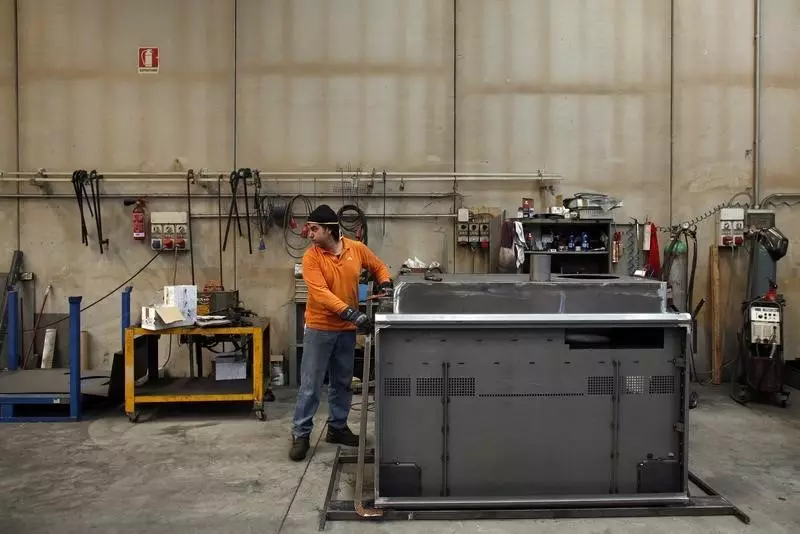The concept of a U.S. manufacturing revival has been a hot topic in political circles, with promises of restoring the industrial might that once defined the American economy. However, upon close inspection, it is evident that the manufacturing sector has been on a gradual decline for decades. While certain industries like semiconductors have seen modest increases in output, the overall picture is one of stagnation. Despite some gains in manufacturing jobs since 2010, the sector’s long-term trajectory continues to trend downwards, raising doubts about any industrial renaissance.
The challenges facing U.S. manufacturing extend beyond just investment and productivity. As economies evolve, the shift from industrial-based growth to service-driven economies is inevitable. Wealthier societies tend to shift their consumption habits towards services, reducing the importance of manufacturing. Even countries like China, often seen as a manufacturing powerhouse, have witnessed a decline in their manufacturing share of GDP since 2008. This shift poses significant obstacles to any attempts at re-industrializing the U.S. economy.
One of the major hurdles to a manufacturing revival in the U.S. is the high labor costs in the country. While American workers are significantly more productive than their Chinese counterparts, the wage gap is vast. This makes it challenging for U.S. companies to compete in labor-intensive industries, pushing them towards specializing in high-value sectors like aerospace and medical devices. The manufacturing sector’s concentration in specialized industries highlights the difficulty of competing in more labor-intensive sectors.
Much of the talk around a manufacturing renaissance in the U.S. is driven by political motives rather than economic realities. While promises of revitalizing domestic manufacturing play well in key swing states like those in the Rust Belt, the actual policies aimed at achieving this revival have fallen short. Initiatives like the Biden administration’s Inflation Reduction Act and Trump’s tariffs on Chinese imports have not delivered significant results beyond specific industries like semiconductors. This raises doubts about the feasibility of a broader manufacturing revival.
From a market perspective, the lack of tangible benefits for industrial stocks reflects the broader productivity stagnation in the manufacturing sector. Despite government subsidies boosting certain industries like semiconductors, export controls targeting countries like China pose a threat to sustained growth. China’s increasing self-sufficiency in low-end semiconductor production could intensify competition and limit opportunities for U.S. firms in the long run.
While the narrative of onshoring in the U.S. remains politically charged, a new trend known as “friend-shoring” is emerging. U.S. companies are increasingly relocating their production to countries with similar wage levels and economic landscapes as China but with lower geopolitical risks. Nations like Vietnam, Malaysia, Mexico, and India are poised to benefit from this trend as companies move away from China amidst escalating tensions. This shift in global supply chains presents new opportunities for investors, even as the dream of a domestic manufacturing revival in the U.S. remains elusive.

